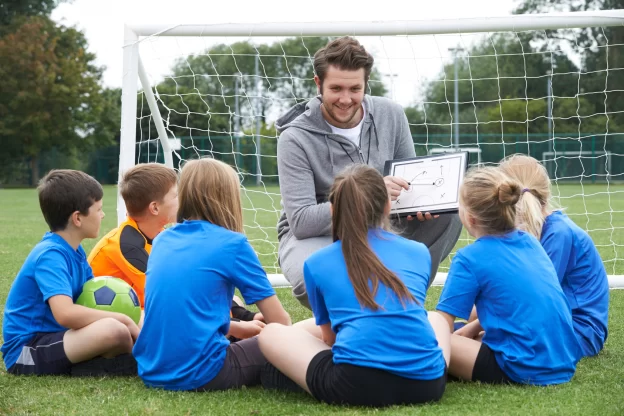Welcome to the “Safeguarding in Sport” online course! This course is designed to provide comprehensive training on safeguarding measures within the sports industry. Safeguarding is of utmost importance in sports to protect the well-being and welfare of athletes, particularly children and vulnerable individuals. Whether you’re a coach, sports administrator, or involved in sports organizations, understanding safeguarding principles and best practices is crucial for creating a safe and inclusive sporting environment. This course will equip you with the knowledge and skills necessary to identify and prevent abuse, implement safeguarding policies, and promote the welfare of athletes.
What you’ll learn:
Module 1: Introduction to Safeguarding in Sport
– Understanding the importance of safeguarding in sports
– Legal and regulatory frameworks for safeguarding
– Roles and responsibilities of individuals and organizations in safeguarding
Module 2: Types and Indicators of Abuse in Sports
– Different forms of abuse in sports (e.g., physical, emotional, sexual)
– Recognizing signs and indicators of abuse in athletes
– Understanding the impact of abuse on athletes’ well-being
Module 3: Creating Safeguarding Policies and Procedures
– Developing and implementing safeguarding policies for sports organizations
– Establishing codes of conduct for coaches, athletes, and staff
– Procedures for reporting and managing safeguarding concerns
Module 4: Safeguarding in Recruitment and Selection
– Ensuring safe recruitment practices for coaches and staff
– Background checks and vetting procedures
– Interviewing and selecting individuals with a focus on safeguarding
Module 5: Training and Education for Safeguarding
– Providing training on safeguarding principles and practices
– Educating coaches, athletes, and staff on recognizing and responding to safeguarding concerns
– Promoting a culture of safeguarding in sports organizations
Module 6: Managing Allegations and Disciplinary Processes
– Protocols for handling safeguarding allegations in sports
– Confidentiality, reporting, and investigation procedures
– Disciplinary measures and consequences for individuals found responsible for abuse
Module 7: Safeguarding Measures in Training and Competition
– Risk assessment and management during training and competition
– Supervision and appropriate adult-to-athlete ratios
– Ensuring safe sports facilities and equipment
Module 8: Collaborating with External Agencies and Stakeholders
– Partnership with child protection and law enforcement agencies
– Multidisciplinary collaboration in safeguarding cases
– Sharing information and ensuring effective communication
Module 9: Continuous Improvement and Monitoring
– Evaluating the effectiveness of safeguarding policies and practices
– Regular reviews and updates of safeguarding procedures
– Learning from incidents and implementing improvements
Career Path: Safeguarding Officer in Sports
Upon completing the “Safeguarding in Sport” course, you will have a strong foundation in safeguarding principles and practices in the sports industry. Here’s a suggested career path:
1. Sports Coach/Assistant: Start your career as a sports coach or assistant in a sports organization. Apply the knowledge gained from the course to ensure the safety and well-being of athletes, implementing safeguarding measures within your role.
2. Safeguarding Coordinator: With experience, you can progress to the role of a safeguarding coordinator within a sports organization. In this role, you will be responsible for coordinating safeguarding efforts, developing policies and procedures, and ensuring compliance with safeguarding regulations.
3. Safeguarding Officer: Become a safeguarding officer specializing in sports safeguarding. In this role, you will oversee safeguarding initiatives, manage safeguarding cases, provide training and guidance to staff, and work closely with external agencies to protect the welfare of athletes.
4. Safeguarding Manager: Progress to the role of a safeguarding manager, where you will have broader responsibilities in managing safeguarding programs across multiple sports organizations or within a national governing body. You will develop strategies, set standards, and ensure adherence to safeguarding policies and regulations.
5. Safeguarding Consultant: Utilize your expertise as a safeguarding consultant, providing advisory services to sports organizations and institutions. You will assess current safeguarding practices, develop tailored safeguarding frameworks, and deliver training programs to enhance safeguarding measures.
6. Director of Safeguarding and Welfare: Reach the highest level of your career as a director of safeguarding and welfare within a sports organization or governing body. In this leadership position, you will have strategic oversight of safeguarding initiatives, shape policies and procedures, and advocate for the welfare and protection of athletes.
